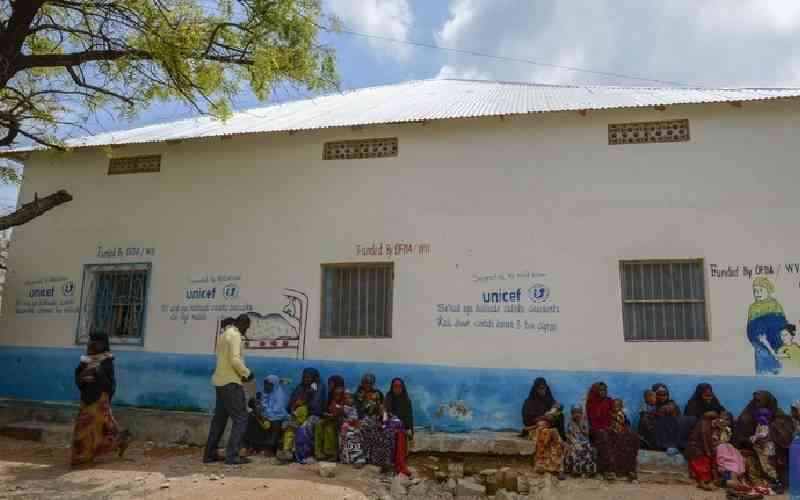
Since the beginning of this year Kenya has reported some 1,216 cases of cholera. Fourteen people have died from the disease that is an average of two every month.
Cholera is one of those epidemic diseases that are World Health Organization (WHO) notifiable. Together with yellow fever and plague, it is required that within 24 hours of a suspected case, responsible national bodies should inform the WHO. The regulations that govern this classification are bound by the International Health Regulations and are informed by the need to check the spread of the diseases while at the same time, giving the least disruption in the movement of people.
The current risk assessment for cholera in Kenya is categorised as high at national and regional and moderate at international level according to WHO.
According to the Ministry of Health, 336 cases and 3 deaths have been reported in Nairobi alone since the beginning of May. For a disease with a case fatality rate of less than 1 per cent this is bad news.
First things first though.
Cholera is an acute bacterial infection of the gut that is spread through faecal contamination of foodstuff and water. The duration it takes from infection to manifestation of symptoms may vary from a few hours to some days.
It must however, be noted that about 70 - 80 per cent of cholera infections remain asymptomatic.
This is because of a natural immunity that some people in endemic areas acquire. Around 25 per cent suffer only mild symptoms that may not require hospitalisation. Roughly, only 2 per cent suffer the severest forms.
Going by the above figures it is apparent that Kenya and specifically Nairobi, has an unacceptable cholera burden. Owing to its importance and strategic location, the economic implications of this are clear to anyone who is keen. It is unfortunate that the two recent outbreaks were at high level conventions.
The public health implication of these outbreaks is troubling.
The nature of epidemics is such that in a short duration of time immense resources have to be diverted to treat cases and contain them. A disease like cholera can within a very short time have devastating effects. This is because of its rapid spread and fast disease progression process that contributes to the high mortalities seen in untreated cases.
That cholera has persisted in Nairobi for the better part of this year is an indictment on the public health delivery system, county government and national governments.
The complacency of the general public is not without blame too. Any observant person in Nairobi will not fail to notice the broken down water and sewage supply system that is characterised with leakages, blockages and bursts.
Then there is the erratic water supply that leads to a thriving water vending business. It is even worse in the slums with open sewer lines dotting the crowded settlements.
A great number of people remain very susceptible to cholera. This is because many of the people without symptoms or with only mild forms still shed the bacteria in stool and thus remain potent sources of new infections. It thus remains an ember-in-the-dry-savannah type of situation.
Stay informed. Subscribe to our newsletter
It is, however, unfortunate that already some of the measures crafted by the Ministry of Health have faced open defiance because they seem not only punitive, but selective.
It, however, remains a point of concern that an epidemic of this nature will go on for several months. The ministry and county governments must at all times have functional and effective disease surveillance programmes that are tasked with doing the heavy lifting in this regard.
Did two Cabinet Secretaries have to fall victims for the gravity of the situation to be appreciated? Health being a devolved function, will call for inter-county and even intra-agency liaisons that forge joint responses not only in the event of epidemic outbreaks but for surveillance purposes.
The failure in basic disease prevention strategies of waste collection and disposal in Nairobi is the one thing that needs urgent intervention.
With frequent disruptions in health services delivery by way of health care provider strikes our health care systems remains very fickle. This is another area that needs a lasting solution.
On the whole, the public health department has sunk to a level of complacency that is unprecedented for a city of this stature. The need for an immediate revamp cannot be gainsaid.
It is telling that the source of the current outbreak remains vague. In public health practice, identifying the source carries extreme value in managing the epidemic.
The bottom line is that in this day and age of rapid progress in health innovations and technologies cholera need not kill anyone. Captured in time it is an easily treatable disease but one that we have let get out of hand.
Mr Masakhwe is a Clinical Officer based in Nairobi
 The Standard Group Plc is a
multi-media organization with investments in media platforms spanning newspaper
print operations, television, radio broadcasting, digital and online services. The
Standard Group is recognized as a leading multi-media house in Kenya with a key
influence in matters of national and international interest.
The Standard Group Plc is a
multi-media organization with investments in media platforms spanning newspaper
print operations, television, radio broadcasting, digital and online services. The
Standard Group is recognized as a leading multi-media house in Kenya with a key
influence in matters of national and international interest.
 The Standard Group Plc is a
multi-media organization with investments in media platforms spanning newspaper
print operations, television, radio broadcasting, digital and online services. The
Standard Group is recognized as a leading multi-media house in Kenya with a key
influence in matters of national and international interest.
The Standard Group Plc is a
multi-media organization with investments in media platforms spanning newspaper
print operations, television, radio broadcasting, digital and online services. The
Standard Group is recognized as a leading multi-media house in Kenya with a key
influence in matters of national and international interest.









